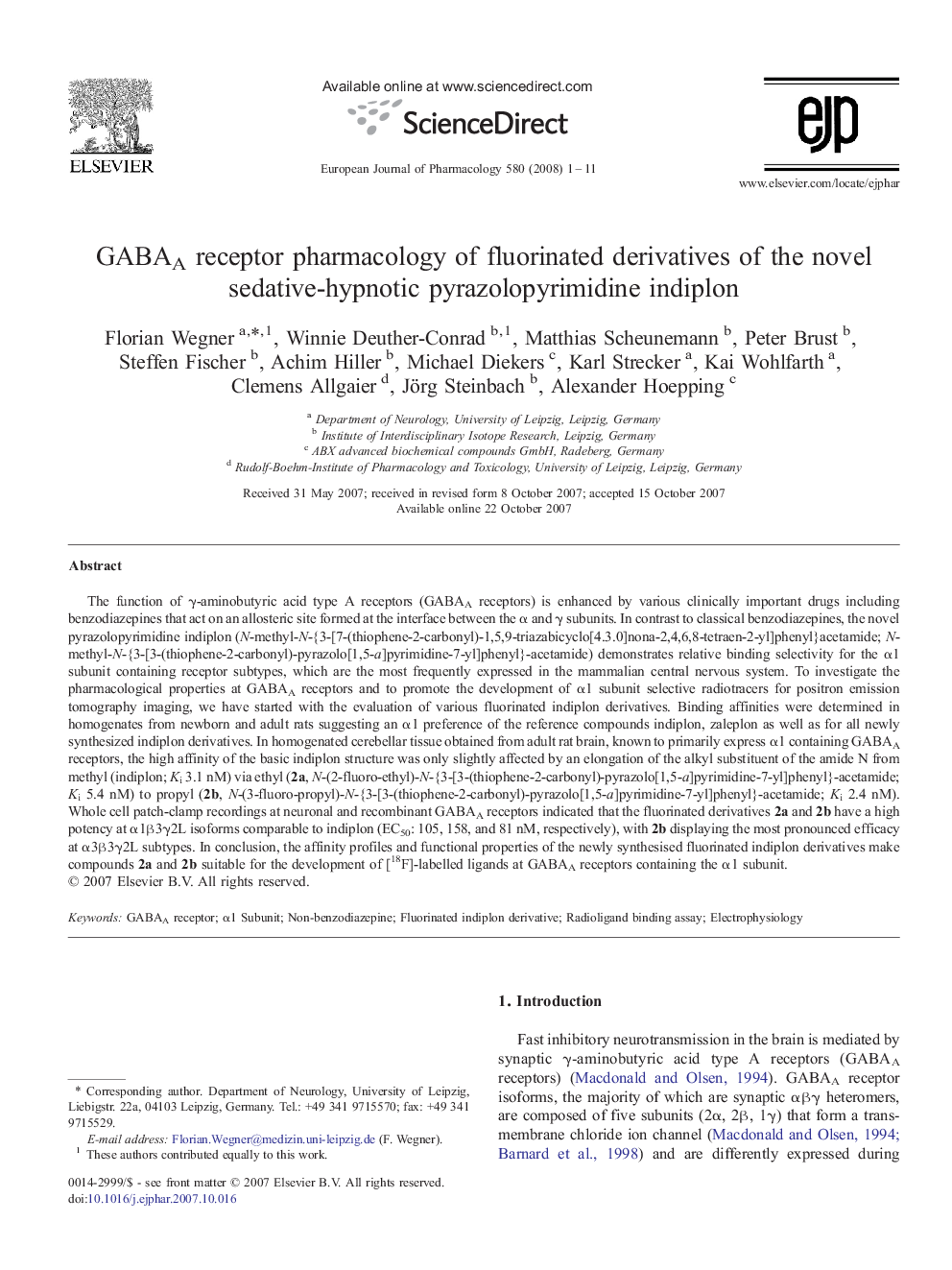| Article ID | Journal | Published Year | Pages | File Type |
|---|---|---|---|---|
| 2535624 | European Journal of Pharmacology | 2008 | 11 Pages |
The function of γ-aminobutyric acid type A receptors (GABAA receptors) is enhanced by various clinically important drugs including benzodiazepines that act on an allosteric site formed at the interface between the α and γ subunits. In contrast to classical benzodiazepines, the novel pyrazolopyrimidine indiplon (N-methyl-N-{3-[7-(thiophene-2-carbonyl)-1,5,9-triazabicyclo[4.3.0]nona-2,4,6,8-tetraen-2-yl]phenyl}acetamide; N-methyl-N-{3-[3-(thiophene-2-carbonyl)-pyrazolo[1,5-a]pyrimidine-7-yl]phenyl}-acetamide) demonstrates relative binding selectivity for the α1 subunit containing receptor subtypes, which are the most frequently expressed in the mammalian central nervous system. To investigate the pharmacological properties at GABAA receptors and to promote the development of α1 subunit selective radiotracers for positron emission tomography imaging, we have started with the evaluation of various fluorinated indiplon derivatives. Binding affinities were determined in homogenates from newborn and adult rats suggesting an α1 preference of the reference compounds indiplon, zaleplon as well as for all newly synthesized indiplon derivatives. In homogenated cerebellar tissue obtained from adult rat brain, known to primarily express α1 containing GABAA receptors, the high affinity of the basic indiplon structure was only slightly affected by an elongation of the alkyl substituent of the amide N from methyl (indiplon; Ki 3.1 nM) via ethyl (2a, N-(2-fluoro-ethyl)-N-{3-[3-(thiophene-2-carbonyl)-pyrazolo[1,5-a]pyrimidine-7-yl]phenyl}-acetamide; Ki 5.4 nM) to propyl (2b, N-(3-fluoro-propyl)-N-{3-[3-(thiophene-2-carbonyl)-pyrazolo[1,5-a]pyrimidine-7-yl]phenyl}-acetamide; Ki 2.4 nM). Whole cell patch-clamp recordings at neuronal and recombinant GABAA receptors indicated that the fluorinated derivatives 2a and 2b have a high potency at α1β3γ2L isoforms comparable to indiplon (EC50: 105, 158, and 81 nM, respectively), with 2b displaying the most pronounced efficacy at α3β3γ2L subtypes. In conclusion, the affinity profiles and functional properties of the newly synthesised fluorinated indiplon derivatives make compounds 2a and 2b suitable for the development of [18F]-labelled ligands at GABAA receptors containing the α1 subunit.
